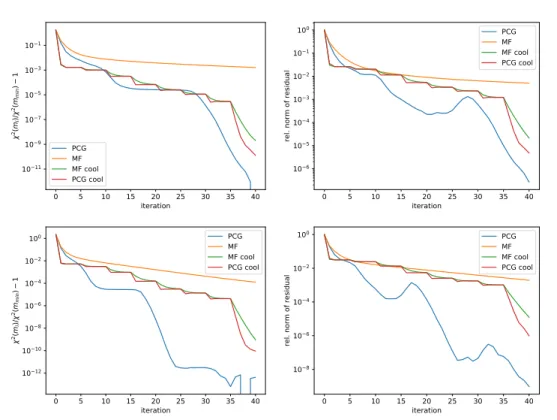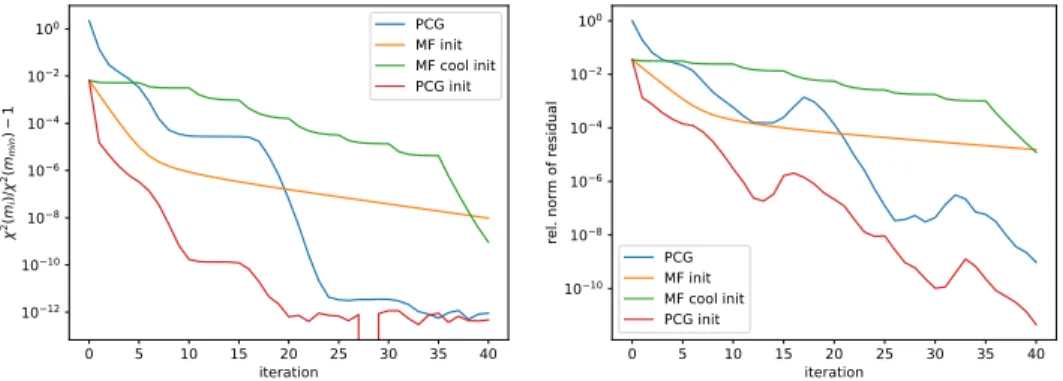Solving linear equations with messenger-field and conjugate gradient techniques: An application to CMB data analysis
Texte intégral
Figure




Documents relatifs
Moreover, the DWT transform permits a straight forward description of locally stationary Gaussian noise via the time evolution of the variance of the wavelet coefficient but with
Abstract — A Preconditioned Conjugate Gradient Based Algorithm for Coupling Geomechanical- Reservoir Simulations — In this article, we introduce a new coupling algorithm between
These convergence issues were solved with a DPCG method that annihilates the effect of the largest unfavourable eigenvalues of the preconditioned coefficient matrix of ssSNPBLUP
Due to this increase in time per iteration, ssSNPBLUP_Liu using double precision reals needed about 56% more wall clock time to complete than ssSNPBLUP_Liu using Plink 1 binary
As a result, the two new adaptive MPCG algorithms namely, Algorithm 2 with the global τ –test, and Algorithm 3 with the local τ –test can straightforwardly be applied to the BDD
Moreover, we also run tests using eight MPI processes and two OpenMP threads per process – the Opt and ExBLAS results are again identical in terms of the number of
We prove that the associated problem in terms of vectors has a unique solution which is the corresponding approximation of the vector field dataset.. In Section 3, we give a
Unit´e de recherche INRIA Rennes, Irisa, Campus universitaire de Beaulieu, 35042 RENNES Cedex Unit´e de recherche INRIA Rhˆone-Alpes, 655, avenue de l’Europe, 38330 MONTBONNOT ST